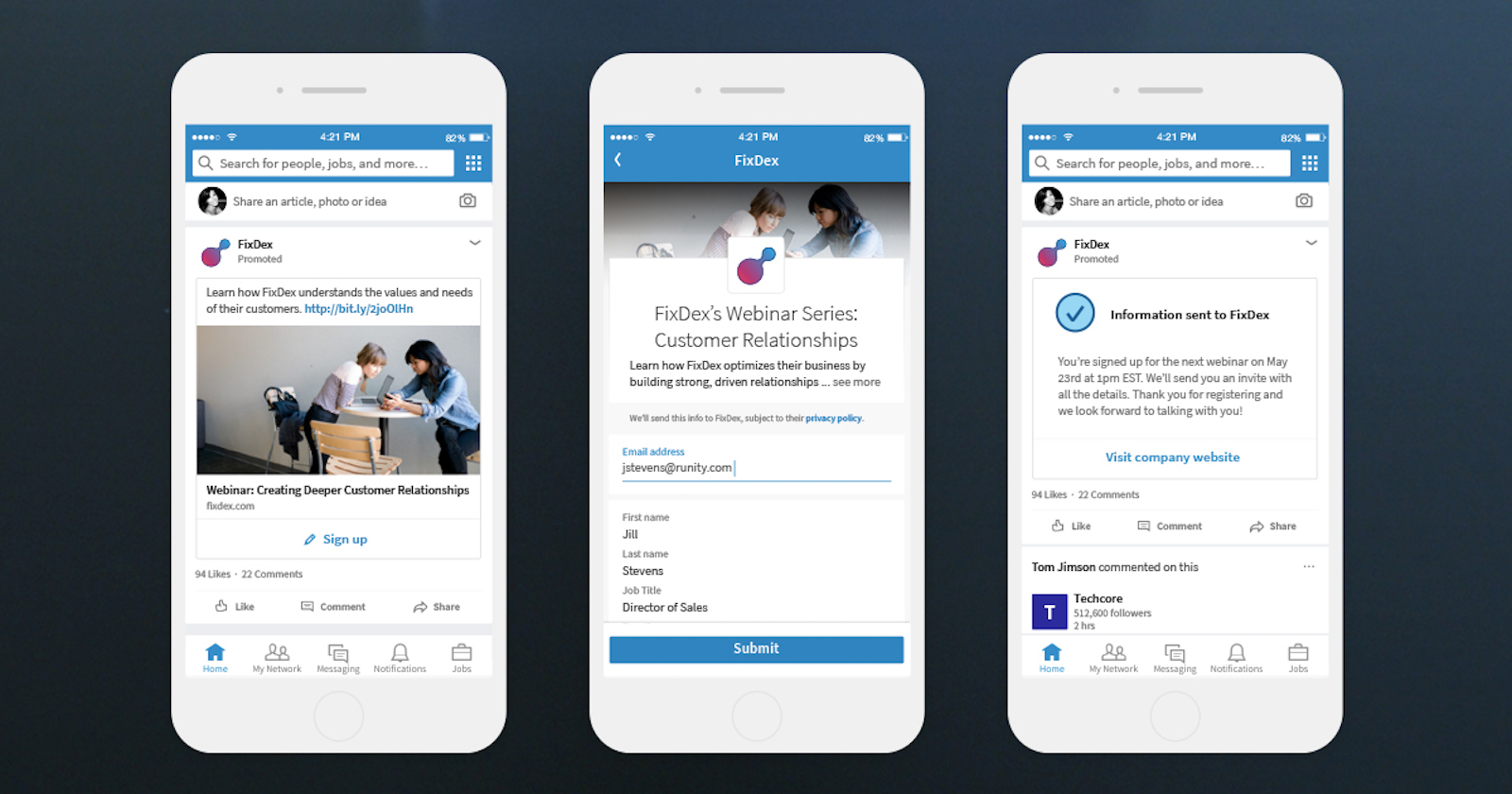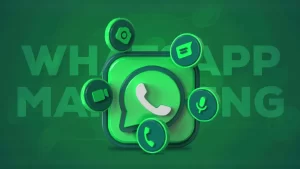
In the bustling world of B2B interactions, LinkedIn emerges as a powerhouse for lead generation. Imagine a platform where almost 94% of B2B marketers don their competitive hats for more fruitful connections. It’s true—LinkedIn boasts a stunning 80% share of all B2B leads, positioning itself as the premiere arena for savvy marketers. But here’s the kicker: with almost 60% of marketers still battling quality lead snagging, it’s clear there’s magic in harnessing LinkedIn right. This post will arm you with the tricks and tips needed to transform LinkedIn into your personal B2B lead-generating machine. You’ll be the strategy maestro, adept at navigating the nuances that turn digital handshakes into genuine business opportunities. Ready to make LinkedIn work harder for you? Let’s get started!
Understanding the Power of LinkedIn for B2B Leads
Harnessing LinkedIn effectively for B2B lead generation can be like striking gold in the business world. With its massive user base and professional focus, LinkedIn provides an unmatched platform to discover potential business partners and opportunities. In this section, let’s break down the reasons why LinkedIn is a powerful ally in your B2B marketing arsenal.
The Professional Network Effect
LinkedIn is not just a social network—it’s a professional playground where business interactions naturally thrive. Think of it as a networking event that never ends. Here, you can connect with industry leaders, potential clients, and strategic partners without leaving your desk. The environment is primed for business talk—from sharing experiences and advice to forming valuable connections—making it ideal for nurturing B2B relationships.
Key advantages include:
- Direct Access to Decision-Makers: Unlike other social platforms where personal lives take the stage, LinkedIn centers on professional discourse. It’s where executives, managers, and entrepreneurs deliberate over industry changes and opportunities.
- Authority and Trust: Engaging on LinkedIn helps you build authority and foster trust within your industry. By sharing your insights and expertise, you position yourself as a thought leader who attracts like-minded professionals, creating a fertile ground for B2B leads. For more on social media goals and strategies, explore Top Social Media Marketing Goals to Fuel Local Business.
User Demographics and Reach
Emphasizing the business aspect, LinkedIn boasts an impressive user registration, featuring over 810 million professionals from across 200 countries. Its demographic is essential in targeting business professionals who are serious about building strong, mutually beneficial partnerships.
The breakdown of LinkedIn’s reach unveils:
- Broad Spectrum of Industries: LinkedIn covers an extensive range of industries, from tech to healthcare, ensuring that no matter your niche, there’s a significant segment of your audience present.
- Access by Job Title and Function: Whether you’re looking for CEOs or operational managers, LinkedIn’s search functionality allows you to target specific roles. This tailored approach maximizes reach to those who truly matter to your business growth.
- Rich Analytics and Insights: With real-time data insights, LinkedIn provides detailed analytics to help you understand how your content and campaigns are performing among your audience, equipping you with information to fine-tune your strategies.
LinkedIn goes beyond being just a recruitment tool or resume depot. It represents a powerful blend of social media and professional networking that can drive your B2B lead generation to new heights. Engage here, grow there—it all starts by acknowledging its unique strength in uniting professionals across borders.
Crafting an Irresistible LinkedIn Profile
In the digital marketplace of LinkedIn, a well-rounded, engaging profile stands as your first handshake and one of the most critical facets of successful B2B lead generation. Your LinkedIn profile isn’t just an online resume—it’s a narrative device, a trust-building beacon, and your personal brand ambassador. It’s how potential partners perceive and decide whether to engage with you.
Professional Profile Picture and Headline
Making a strong start with a stellar profile picture and an eye-catching headline sets the tone for what you bring to the table. People want to engage with those who exude professionalism and confidence, both in appearance and positioned expertise. Do you know that a LinkedIn profile with a picture gets around 21 times more profile views?
Here are some effective tips for selecting and positioning these elements:
- Profile Picture Tips:
- Keep it Professional: Go for a headshot with clear lighting and a simple, neutral background.
- Smile Naturally: A warm, inviting smile can do wonders for how approachable you appear.
- Dress Accordingly: Wear attire that matches the professionalism of your industry.
- Crafting Your Headline:
- Highlight Your Specialty: Your headline should immediately reflect your expertise, such as “B2B Sales Strategist” or “Data-Driven Marketing Expert.”
- Incorporate Unique Value: Tell viewers not just who you are, but why you’re unique.
- Stay SEO-Friendly: Use industry-relevant keywords like B2B lead generation.
Compelling Summary and Experience Sections
Moving past the first impression, your summary and experience sections should deliver a polished narrative of your professional journey—one that not only covers your work history but also sparkles with your achievements.
Here’s how you can develop this crucial storyline:
- Writing Your Summary:
- Tell a Story: Share your professional journey, key experiences, and what drives you, weaving them into a coherent and engaging story.
- Evidence of Impact: Showcase real-world impacts of your work using quantifiable achievements.
- Keywords Matter: Just like in SEO strategy, employing terms like B2B leads from Linkedin can improve discovery by prospects.
- Detailing Experience:
- Highlight Key Roles: List only relevant experiences that ladder up to your expertise.
- Focus on Achievements: Instead of listing duties, focus on accomplishments and how they contributed to organizational success.
- Consistency and Clarity: Use clear language ensuring that milestones connect logically, forming an unbroken chain of your aspirations and expertise.
When you master these LinkedIn elements, you turn this network into a thriving garden for booming B2B opportunities—good seeds, solid soil, plentiful sunshine lead to abundant connections. Wouldn’t you agree it’s time your profile started working for you? Let’s lay that path!
Leveraging LinkedIn Content Marketing
Making LinkedIn work for you isn’t just about connections and profile tweaks—it’s about sharing the right content that sparks conversations and attracts B2B leads like bees to honey. With content being king, LinkedIn offers a throne for businesses to claim authority, foster engagement, and convert curious browsers into loyal followers. Let’s explore how you can craft content that’s not only read but remembered.
Creating Valuable Posts and Articles
In the scroll-happy universe of LinkedIn, breaking through the noise with posts that resonate requires an artful balance of insight and brevity. Want your posts to soar and engage rather than sink and obscure? Let’s fuel those clicks and comments with some savvy tactics:
- Keep It Relevant and Timely: Share content that aligns with current industry trends and hot topics. What are the pain points of your audience? What’s trending today? Addressing such themes ensures that your content is not only seen but sought after.
- Craft Compelling Headlines: They say you should never judge a book by its cover, yet headlines hold power. Create titles that grab attention. Think evocative and curiosity-piquing, rather than just descriptive.
- Share Personal Insights: Giving your perspective, advice, or learnings personalizes your posts, drawing readers in with relatable experiences and trusted expertise.
- Utilize Lists and Examples: Simplify the communication of your ideas by using lists or examples. They not only heighten readability but also enable quick digestion of key points.
Consider visiting our insights on Social Media Marketing – Clickyowl for more tips on maximizing your reach through strategic content sharing.
Utilizing LinkedIn Videos and Presentations
Mixing up your media can work wonders for your outreach, switching the narrative from solely textual reads to engaging visual stories. Here’s why and how integrating multimedia can supercharge your LinkedIn presence:
- Harness the Power of Video:
- Storytelling: Videos offer an avenue to weave narratives vividly. Use this form to showcase client success stories, explain complex processes, or demo new products.
- Build Trust: Seeing, in this virtual space, often equates to believing. Voices and faces lend authenticity, making viewers feel closer and more connected.
- Engage with Slides and Infographics:
- Break Down Data: Charts and infographics condense statistics and thought leadership into digestible items that resonate better than plain text.
- Highlight Key Points: Presentations enable you to drill down into specific themes with pinpoint precision, perfect for webinars and step-by-step guides.
Though text is tried and true, spicing it up with multimedia not only diversifies content engagement methods but appeals to broader audience variegities. Always align your visual content with your broader LinkedIn strategy for B2B leads from LinkedIn.
For an even deeper dive into performance-centered strategies, explore our specific methods for Performance Marketing.
Building Connections and Networking
Networking on LinkedIn isn’t just an activity—it’s an art. The platform has morphed into a colossal virtual networking event, bustling with industry experts, thought leaders, and like-minded professionals. Think of it like navigating a bustling digital marketplace with hidden gems at every turn, ripe for collaboration and connection. Figuring out this landscape can be tricky but oh-so-rewarding.
Engaging with Industry Leaders: Strategies for connecting and interacting with influencers in your field
When it comes to connecting with the big fish in your industry, a little savvy strategy goes a long way. Engaging with these key players opens doors to new opportunities and sheds light on industry trends. So, how do you break into their circle?
- Follow and Observe: Before diving into a conversation, start by following them. Observe their posts, understand their content style, and gauge their interests. This reconnaissance helps tailor your approach and align with their thought process.
- Engage Meaningfully: It’s not enough to just like their posts—actively engage with insightful comments or questions. This interaction shows you’re not just lurking in the shadows but are part of the conversation.
- Leverage Common Connections: Utilizing mutual connections can be a gateway to introductions. Requesting a direct introduction from someone they trust adds gravity to your connection request.
- Provide Value: Offer something valuable in return. Share your insights, connect them with useful contacts, or provide feedback on a topic they’re passionate about.
These strategies are like networking magic spells, turning potential connections into promising partnerships. Remember, connecting with industry leaders is not about what you can take from them but what you can learn and contribute.
Best Practices for Sending Connection Requests: How to personalize requests to increase acceptance rates
With LinkedIn flooded with requests, setting yourself apart can feel challenging. But a personalized connection request can turn a possible “ignore” into an enthusiastic “accept.”
- Craft a Personalized Invitation: Generic requests blend into the background noise. Personal invitation messages should refer to your shared interests or recent posts they’ve uploaded that you’ve found valuable.
- Be Clear and Concise: Maintain brevity in your request. Explain who you are and why a connection would be mutually beneficial in a couple of meaningful sentences.
- Avoid Sales Pitches: Refrain from pitching a product or service right off the bat. This approach can feel transactional and may deter acceptance.
- Mention Common Interests or Experiences: Personal connections aid in digital connections too. Mentioning common experiences, like attending the same webinars or sharing industry publications, breeds familiarity and trust.
Personalizing your invitation feels innocent yet clever, much like finding a personalized note on your doorstep. It tells the recipient, “I see you, here’s why you should see me too.” The ripple effect of strategic, well-minded networking on LinkedIn can lead to expansive B2B leads from LinkedIn.
Building connections and networking via LinkedIn isn’t just a superficial engagement—it’s a bonded collaboration ignited by well-aimed and thoughtful engagements. This connectedness can be leveraged into opportunities you can’t even imagine yet. Who will you connect with today?
Utilizing LinkedIn Groups for Lead Generation
Navigating LinkedIn for B2B leads often feels like searching for a needle in a haystack. But with LinkedIn Groups, you’re diving into a treasure trove brimming with potential. These groups offer a vibrant meeting place, almost a virtual conference room, where industry insiders, potential clients, and thought leaders all converge. It’s about finding the right ones, jumping into discussions, and letting your expertise shine!
Finding Relevant Groups in Your Industry
So, how do you hunt down the LinkedIn Groups that will deliver value? It’s like finding the perfect book on a library shelf. Start with focused searches using industry-specific keywords. Don’t stop at the first page—LinkedIn’s search feature is detailed, with no shortage of options.
Here’s how you can become an expert LinkedIn Group detective:
- Use Keywords Wisely: Incorporate industry terms directly related to your business niche.
- Check Group Activity: Join active groups with regular, meaningful engagement. Dead groups are like a party that’s fizzled out before you arrive.
- Screen Member Type: Look for a group boasting members from your target sector—they’re your future clients and partners.
- Utilize Group Suggestions: Trust LinkedIn’s recommendations. It’s like when Netflix knows your next binge before you do.
Once you’re in, observe the conversations to understand their vibes before making your debut.
Contributing to Discussions and Adding Value
LinkedIn isn’t just about joining groups—it’s about becoming an integral part of the conversation. Here, intrigue meets interaction. If you think of LinkedIn Groups as a garden, your contributions are the watering can prepping it for growth.
Let’s break it down:
- Be Consistent: Regular participation cements you as a reliable presence in the group.
- Offer Insightful Comments: Provide comments that are more than just virtual nods—jump to the heart of the discussion with data and expertise.
- Ask and Answer: Pose questions to spark dialogue and don’t shy from responding, turning inquiries into opportunities.
- Share Resources and Publications: Differentiates your contributions by curating links to industry reports or learn more about helpful resources.
Think of these actions as your way to steer the spotlight on you and spotlight your business knowledge. You’re not just shouting into the void; you’re weaving a web of connections and opportunities for B2B leads from LinkedIn. The more value you add, the more the group members will notice you, and when they do, don’t be surprised when your network steadily grows along with interest in what you can offer.
Implementing LinkedIn Ads for Targeted Lead Generation
Navigating the business-focused realm of LinkedIn Ads promises an unparalleled advantage for generating B2B leads. This platform sits behind the polished veneer of professionalism, connecting businesses to precise demographics and industry segments efficiently and effectively.
Types of LinkedIn Ads
LinkedIn offers various advertising options tailored to reach specific professional groups. Let’s quickly review the main types of LinkedIn Ads that get results:
- Sponsored Content: This is the bread and butter of LinkedIn Ads. It involves sharing content, like articles or posts, directly in your target audience’s feed. This is superb for boosting brand awareness, increasing followers, or directing traffic to your website.
- Message Ads: Strike directly into the inbox of your audience with Sponsored InMail. It mimics email marketing but within LinkedIn’s secure messaging feature, ensuring personalized engagement. Ideal for sending promotional or event-based communications.
- Dynamic Ads: Personalization is king here! These ads automatically customize the ad content for each viewer. Ever seen an ad with your name on it? That’s the magic.
- Text Ads: Short and sweet ads appearing in LinkedIn’s sidebar promoting quick engagement.
In understanding these types, you’re setting the stage to execute strategies that place your messages where professionals meet.
Setting Up Effective Campaigns
Getting creative with ad types is just the beginning—the real magic lies in how you set up your campaign. Here’s how to master-target your audience and optimize your budget:
- Define Your Target Audience: Use LinkedIn’s specific filtering options—industry, job title, location, even skills and interests. Think of it as precision striking in bowling; eliminating non-relevant prospects means steering your ball directly towards the pins. This makes LinkedIn the archery of digital advertising—hitting specific spots instead of throwing wide nets. Tailored targeting improves the quality of leads because your ads won’t wander into feeds they don’t belong in.
- Effective Budgeting: Decide a daily or campaign-long budget that reflects not just your ambitions but what’s realistic for reach. Stay sharp with guesstimates of your cost per lead or click. Adjust—as precise as physicists with adjustments in a nuclear reactor—to either maximize or scale opportunities with retrospective insights after each campaign’s lifecycle.
- Analyzing and Adjusting: Use LinkedIn’s analytic tools like a school teacher with classroom tests, regular checks on your campaign performance to revise ongoing projects based on both hard metrics and subtle audience responses.
An encouraging note—these campaigns powerfully align with professional networks enhancing lead generation and effectively reaching a challenged audience with good content, strategic playing, and adaptability.
Learn more strategies on integrating digital advertising techniques in broader marketing inorganic patterns by visiting Digital Marketing Strategies for Graphic Design Agencies.
Like an acclaimed Michelin-star chef tweaking recipes for heightened allure, employing LinkedIn Ads with detail can attract eager prospects. Developers stand poised to harness B2B connections, creating pipelines that feel streamlined yet strategic, reaching panoramas beyond expectations.
Measuring Your LinkedIn Lead Generation Success
Unlocking the full potential of LinkedIn for B2B leads is like baking a pie — it’s all about getting the right ingredients and knowing when they’re just right. By tracking the success of your efforts, you’ll know whether your strategies are bringing in those golden leads or if it’s time to troubleshoot your recipe. Now, let’s dig into this metric world and fine-tune our LinkedIn B2B operation.
Key Performance Indicators (KPIs)
To capture your LinkedIn successes, keep your eyes glued to Key Performance Indicators (KPIs) — the secret spices of your lead-gen recipe. They tell the juicy tale of how well your lead efforts simmer into business relationships. Without these, you’re navigating the LinkedIn seas blindfolded.
Here are the key metrics to keep an eye on:
- Connection Requests Accepted: Are your personalized notes striking the right chord? This metric measures your invite effectiveness.
- Engagement Rate: Likes, comments, and shares detail whether your content is hitting the bullseye putting handshakes in motion.
- Conversion Rate: Do your leads contact your sales team via smooth journeys, or do they flee mid-path? These measure your lead pipeline’s efficiency.
Top Tip: Monitoring conversion requires tools—and more tools equal better recipes. Consider feasting on insights from Why Brands Neglect Ecommerce SEO & Why They Shouldn’t, where we find parallels in ecommerce monitoring that might surprise you.
Using LinkedIn Analytics to Refine Strategies
Now that you have all these delicious data bites, it’s time to whip up improvement strategies using LinkedIn Analytics. This handy tool works like a chef’s taste test, signaling when your lead-gen soufflé needs more heat or quite simply a little cooling down.
Here’s how to leverage LinkedIn Analytics:
- Profile View Insights: Track who’s checking you out. Being aware helps trigger proactive connections.
- Content Analytics: Uncover content types sitting at the top—those that engage readers until the end of the rainbow of engagement.
- Follower Demographics: Comprehensive knowledge of followers demystifies what tunes trigger jazz taps and which hit sour notes.
Practical steps with tools can elevate your standards to hit high marks again. Check resources over at Google Ads vs Bing Ads to broaden your impactful data play approach.
With lively analytics guiding your social ship, it beams stars for role refinements and thoughtful commuting. Use this to sell betters to light wooden decks crafting heartfelt B2B collaborations — it’s artisanal networking in its finest digital form.
Integrating LinkedIn with Your Sales Funnel
Turning those valuable LinkedIn connections into solid sales leads isn’t just about a handshake. It’s about nurturing, managing, and guiding these potential clients through your sales funnel like shepherding adorable ducks across a bustling road. So, how can you ensure they’re marching in the right direction? Let’s find out.
Nurturing Leads Through Email Campaigns: How to transition LinkedIn connections to email for follow-ups.
You’ve made the LinkedIn connection—awesome! But how do you keep the conversation flowing when social media chatter isn’t enough? Enter: email campaigns. Transitioning from LinkedIn to email ensures you’re top of mind while also giving room for that personal touch.
- Create Personalized Content: Tailor each email to resonate with your contacts. Using details from their LinkedIn profile? You’ve got what it takes.
- Be Consistent but Flexible: Regularly reach out but be adaptable to their responses. If they’re interested in sustainable business practices, dive into those discussions.
- Incorporate Valuable Offers: People love getting free tips, periodic newsletters, or sneaky previews before anyone else. Why not give them a peek into your mind’s library?
For insights into steering unclear paths, consider how empathetic communication forms bonds, as discussed in Faceless Digital Marketing – What Is It & How To Use It?.
Utilizing CRM Tools for Lead Management: Suggest tools for managing leads sourced from LinkedIn.
Taming leads isn’t about raw power; it’s about orchestration. Imagine a conductor directing an orchestra. CRM tools offer that baton, letting you streamline lead management with ease and precision.
Top CRM picks include:
- HubSpot CRM: Its LinkedIn Sales Navigator integration makes handling lead engagement a breeze. It offers a symphony of tactics and strategies.
- Salesforce: Let’s you capture every meaningful note in your leads’ journey—from pestering challenges to articulated crescendos. Best fitted send-offs come naturally.
- Pipedrive: Reliable for closing deals off every day fundamentals, like gentle wind under its wings. Analyze using Tracking & Reporting.
Lead management reigns supreme when guided by reliable CRM systems. They can pull LinkedIn’s insights straight into their cores, making sure no juicy opportunity slips through unnoticed.
Smoothly integrating your LinkedIn interactions into emailed delights and CRM treasures turns potential stones into silver gems. That’s when your lead-generating engine starts to hum.
Conclusion
Generating B2B leads from LinkedIn is more than plausible—it’s happening all around you. From polishing your profile to harnessing content, engaging groups and using LinkedIn Ads, we’ve broken down every step so you can grab ahold of what’s possible and reel it in.
Let’s face it, LinkedIn is the fertile ground where your professional plant can grow if you embark on your strategy with vigor. Think about incentivizing those connections and introducing them to your sales funnel for lasting relationships.
So why wait? Dive in and test these strategies and don’t forget, the connections you make today might just be tomorrow’s partners in success. Who knows what innovative paths lie await when you make the LinkedIn magic truly yours?




